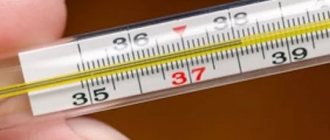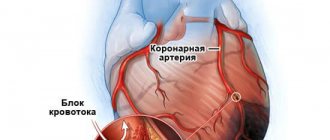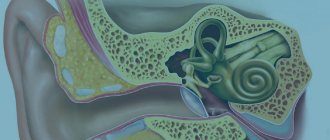Swelling of the legs, unfortunately, is well known to many. The legs swell and increase in volume. This happens because excess intercellular fluid accumulates in the tissues. Normally, the volume of fluid in the body is constant: as much as it enters the body, so much should be excreted. If fluid is retained in the body (and this excess volume can be measured in liters), edema occurs. The formation of edema can also be caused by fluid redistribution (disruption of the normal distribution of fluid throughout the body).
The tissues of various organs and parts of the body can swell, but most often it is the legs that suffer (primarily the ankles and shins). This is explained, firstly, by the fact that the legs bear the maximum load (they have to bear all of our weight - if we stand or walk; hence, long standing work or prolonged walking are factors contributing to swelling of the legs); secondly, the legs are the lowest part of our body; gravity helps the fluid descend here and prevents its outflow.
Swelling of the legs is not always obvious. Its first manifestation may be the appearance of a sock elastic mark on the ankle. At the next stage, the usual shoes become tight. Women notice that the straps of their sandals begin to “sink,” as it were, sinking into loose and soft fabric. Under certain circumstances, the legs can swell even in a healthy person. As a rule, swelling is observed in the evening, as a result of the stress placed on the legs during the day. However, if swelling occurs regularly or persists constantly, you should consult a doctor. Edema is a symptom of a wide range of diseases, many of which are very serious and require immediate treatment.
Physiological edema
Swelling of the legs can be caused by physiological reasons, that is, be a consequence of special circumstances affecting a healthy body, and not a manifestation of a disease. These reasons include:
- salty food. Salt binds water. And if you eat a lot of salty foods, especially at night, you may notice swelling in the morning;
- alcohol. Alcohol also retains water. Therefore, after drinking alcohol, a person looks puffy. The problems are not limited to the face; the legs can also swell;
- hot weather. In the heat, blood vessels dilate as the body tries to normalize heat exchange. More blood flow means the risk of congestion and swelling in the legs increases;
- prolonged sitting or standing. If the legs are in one position for a long time, the blood stagnates in them, which leads to swelling. The worst thing is to sit with your legs crossed. Standing in one place for a long time is also not useful. Swelling of the legs is typical for people in standing professions - hairdressers, salesmen, cooks;
- uncomfortable shoes. If shoes disrupt normal blood circulation in the foot (high heels, narrow arches, tight straps), wearing them will lead to swelling.
Treatment methods
If the legs swell for a long period of time, the patient needs to visit a doctor and carefully follow the specialist’s recommendations. Varicose veins will require the use of certain medications and procedures, while allergies or gout will require the use of others. The doctor will explain how you can remove swelling in your legs and how to avoid complications.
We recommend further reading If your legs are swollen in the foot area
All areas are important: pathogenetic therapy, elimination of the most severe consequences and alleviation of symptoms of the disease. Treatment of diseases in which the legs swell should always be based on getting rid of the causes.
The doctor conducts an initial examination and a thorough history taking. Blood tests, ultrasound, and, less commonly, computed tomography and magnetic resonance imaging are prescribed. An allergy test will help identify possible causes of an unusual reaction. Some signs indicate that the limbs are swelling due to cancer. Then a tissue sample is taken.
Medications
Various medicinal substances for swelling of the legs due to vascular diseases are contained in ointments, gels and solutions for application to the skin. In more serious cases, oral tablets are prescribed. If the lower extremities swell and hurt, then apply anti-inflammatory and analgesic ointments.
Complex therapy of varicose veins:
- compression products (socks, stockings);
- microcirculation correctors;
- angioprotectors;
- phlebotonics.
External remedies are most effective when the lower extremities just begin to swell in the early stages of the disease. Medicines normalize the tone of veins, reduce their permeability and fragility. Thanks to the use of venotonic drugs (phlebotonics), heaviness in the feet and bursting pain in the legs disappear.
You can quickly eliminate pain and minor swelling with the help of ointments and gels Lyoton 1000, Troxevasin, Trombless and others with a similar mechanism of action. The method of application is very simple - apply the product and rub into the skin over the affected veins.
What medications and dietary supplements should you take orally if your limbs swell due to varicose veins and chronic venous insufficiency:
- Phlebodia 600, Phlebofa, Venarus, Detralex;
- Troxerutin, Troxevasin, Ginkor forte;
- Askorutin, Venoruton;
- Venoplant, Escusan;
- Capillary.
Medicine for swelling of the legs is taken orally to reduce capillary permeability and improve venous circulation. The effect appears within 1–2 months.
The diuretic Veroshpiron helps with edema caused by heart failure, hypertension, cirrhosis of the liver, and lack of magnesium and potassium. The active ingredient is spironolactone. When a doctor prescribes Veroshpiron for swelling of the legs, how to take the pills must be clarified immediately. Dosages for different diseases differ significantly.
Diuretics
Drugs in this group are prescribed only for medical reasons. Diuretics for swollen legs increase the excretion of fluid through the kidneys. Diuretics bind water and salts, improve drainage, and reduce swelling.
The drugs Lazex and Furosemide have a short period of action; they are prescribed in emergency situations. Hypothiazide has a long-term diuretic effect. Veroshpiron and Aldactone are considered the least harmful to the body. Diuretics provide temporary relief and are used for a limited time.
Treatment at home
Ointments help if the feet and legs are swollen, and do not have a harmful effect on the internal organs. Such remedies are most often used at home. Swelling of the legs that occurs due to injury or varicose veins is treated with Troxevasin gel. Analogues: Troxerutin and Troxevenol.
Medicines with heparin prevent stagnation of venous blood in the vessels and the formation of blood clots. These are Dolobene and Heparin ointments, Lyoton cream for leg swelling.
How to treat swelling of the legs due to vascular inflammation and rheumatism? You can apply ointments with ibuprofen, diclofenac, nimesulide (Ketoprofen, Diclak-gel). In the evening, do a light massage to help improve the flow of blood and lymph.
Antihistamine tablets and syrups, medicinal liquids, solution for intravenous administration help with swelling of the legs of allergic origin. Antiallergic treatment is also prescribed in cases where the legs not only swell, but also peel and crack.
Decoctions and infusions of plants for oral administration:
- infusion of lingonberry and bearberry leaves;
- cranberry and lingonberry juice;
- carrot juice;
- green tea;
Honey is added to the finished infusions to bind excess liquid. Diuretic mixtures contain parsley, calendula, rowan. Folk remedies are often powerless against the cause of the disease, so they complement drug therapy.
Simple exercises against swelling
Alpha and omega for maintaining health - reasonable physical activity. The simplest exercises for swelling in the legs: changing the position of the body and limbs, race walking, walking during the lunch break and in the evening.
The effect of treating swelling of the legs is enhanced by rotating or moving up and down the fingers and feet, transferring the weight of the body from the toe to the heel and back. Another effective exercise that keeps blood vessels toned is foot stretching (can be performed while sitting or lying down).
“Female” causes of leg swelling
In women, swelling of the legs can be caused by special reasons:
- premenstrual syndrome. Before menstruation, the hormonal balance is disrupted - the relative content of estrogens increases, and estrogens retain fluid in the body;
- pregnancy. During pregnancy, a woman's body produces a large amount of progesterone, which reduces vascular tone. This contributes to stagnation of blood in the legs. The growing fetus can compress large vessels, which also causes edema - this reason becomes significant in the later stages. Swelling can also be a manifestation of gestosis (late toxicosis of pregnancy).
Why do my feet swell?
The appearance of edema is explained by the accumulation of fluids in the tissues, which is caused by:
- high permeability of the vascular walls, which causes impaired blood circulation in the legs;
- blood pressure surges;
- increase or decrease in the concentration of sodium and protein in the blood.
Such disturbances can be caused by temporary or permanent causes. The first include:
- passive lifestyle;
- tissue damage (sprain or ligament rupture);
- frequent consumption of salt in large quantities;
- alcohol consumption;
- excess body weight;
- excessive physical activity;
- wearing uncomfortable (tight) shoes;
- high ambient temperature.
These factors cause temporary swelling of the feet. It is also common for legs to swell during pregnancy and menopause, when hormonal imbalance occurs. There may be other reasons that cause swelling of the tissues in the area of the feet.
Swelling is the most common consequence of bruised feet. Due to damage in this area, blood circulation and fluid outflow are disrupted. After restoration of soft tissues and blood vessels, the swelling subsides.
Regardless of the nature of leg swelling, the causes and treatment should be determined by a doctor. In some cases, eliminating the swelling will require significant adjustments to the patient's lifestyle and surgical intervention.
Swelling of the legs as a symptom of pathological conditions and diseases
Swelling caused by a physiological cause is usually symmetrical, that is, it is observed on both legs at once. Such swelling is usually mild; If you press with your finger, a mark remains at the point of pressure, which disappears right before your eyes. When physiological conditions are restored to normal, edema quickly disappears. The absence of these signs, especially if the swelling does not go away within 24 hours, is a reason to consult a doctor: in this case, the swelling is most likely caused by a pathological cause.
The list of diseases, the manifestation of which can be swelling of the legs, is extensive. Here are the main ones:
- heart failure. If the heart's activity is impaired, it cannot maintain blood circulation at a sufficient level. Congestion occurs, and first - in the area furthest from the heart, and these are precisely the legs (feet, ankles and legs). The swelling that occurs for this reason is symmetrical; swelling intensifies in the evening (under the influence of gravity, blood accumulates in the lower part of the circulatory system);
- vascular diseases. With varicose veins, swelling increases gradually as the disease develops. My legs get tired, and in the evening they begin to ache and swell. By morning the swelling goes away. If one leg is swollen (and hurts), then it may be phlebitis (inflammation of a vein) or thrombosis (a thrombus blocks the lumen of the vessel, as a result of which the blood flow is disrupted, plasma enters the surrounding tissues, causing swelling);
- renal pathology. With renal origin, the peak of swelling occurs in the morning. At the same time, not only the legs swell (swelling on the face is characteristic - “bags under the eyes”), but mainly the feet swell on the legs;
- liver diseases (cirrhosis, liver cancer);
- lymphostasis (impaired lymph outflow);
- erysipelas is an infectious disease caused by group A streptococcus. Lymphostasis is often a consequence (complication) of erysipelas;
- joint diseases - rheumatoid arthritis, injuries, etc. In this case, the affected joint swells;
- thyroid dysfunction. With hypothyroidism, swelling (myxedema) can be observed throughout the body, including the legs. With hyperthyroidism, the surface of the lower leg thickens (in front, just above the ankle). At the site of swelling, the skin becomes keratinized and flaky, hair falls out (hair follicles are lost). When you press on the swelling, there is no trace left, it is elastic, it cannot be crushed into a fold;
- allergic reactions. With allergic arthritis, the joints become swollen. Possible swelling from insect bites.
Individual treatment of edema is ineffective. Edema can be removed if the cause that caused it is random (physiological edema, minor injuries, insect bite). In other cases, treatment of the disease is required, the symptom of which is swelling of the legs.
What to do?
To alleviate the condition before visiting the clinic, you must do the following:
- Limit liquid and salt intake.
- When resting, elevate your legs (place them on a pillow or folded blanket).
- Do not wear socks or knee socks with tight elastic bands.
- If you have visible varicose veins on your legs, you should definitely wear compression stockings.
- If there is accompanying severe pain (injuries, arthritis), you should take a painkiller.
In case of acutely developed swelling of the foot or leg, a change in the color of the skin to bluish or purple, or the appearance of throbbing pain, you must immediately contact the clinic.
The doctor will conduct a survey, examination, laboratory and instrumental examination methods. After diagnosis, the doctor will recommend what to do if the legs at the bottom of the foot and lower leg are very swollen, and will prescribe the necessary treatment.
If swelling increases gradually, then before visiting a specialist, you can take a diuretic tablet.
Which doctor should I contact for swelling of the legs?
If you have swelling of the legs, you should first consult a general practitioner (general practitioner or family doctor). In order to determine the cause of the swelling, a simple examination may not be enough. You must be prepared that you will need to undergo a series of tests or undergo instrumental examination (ultrasound, MRI). In some cases, after receiving the results of the examination, the therapist may refer you to specialized specialists (cardiologist, urologist, etc.).
Causes of edema (injury)
If blood plasma for some reason gets outside the walls of blood vessels, this causes the formation of edema. In particular, often the causes of swelling of the legs in men and women are injuries to the extremities.
In normal situations, swelling decreases and disappears as the injured areas heal. But in the case when soft tissues, which are necessary for free lymph flow or blood flow in the veins of the lower extremities, are damaged, the patient may develop a chronic type of swelling in the injured leg.
By the way, both the injuries themselves and their treatment increase the risk of thrombosis in the deep veins, as well as venous insufficiency.
Folk remedies
- You need to take half a glass of sea salt, stir it in 2 liters of warm water and immerse your feet in the water for 15 minutes. You can replace the bath with a compress. Then you need to soak a terry towel in the solution and wrap it around the swelling area. The course of treatment is 10 days, daily.
- One onion needs to be grated, turning it into onion pulp. This mass should be mixed with sugar (100 g) and left for 12 hours. Then the settled juice should be drained or strained through cheesecloth. Drink 2 tablespoons of syrup. on an empty stomach daily.
- Parsley root should be washed and chopped well. The mixture is brewed with 0.5 liters of boiling water and put in a dark place to infuse for 10 hours. The juice is squeezed out of one lemon and added to the strained infusion.
- Brew 1 tbsp. astragalus 1 tbsp. just boiled water. Then leave it until it cools and filter. Take 3 tbsp infusion. 2 weeks.
- Fresh birch leaves are collected in fabric bags and then the feet are immersed in them. This compress should be kept for 4 hours. It is recommended to perform the procedure daily.
- In equal proportions you need to mix crushed herbs - nettle, peppermint, calamus root, flower - black elderberry, linden. 2 tbsp. The mixture needs to be poured into 0.5 liters of water, hermetically sealed the container in which the herbs are infused, and left for 1 hour. The cooled and strained infusion is drunk half a glass in the morning and evening after meals.
If your leg is swollen in the ankle or foot, this does not always mean there is a disease. There is a possibility that the swelling is caused by intense physical activity or prolonged uncomfortable position of the legs, due to which fluid stagnation has occurred.
In such cases, folk remedies and relaxing massage help. But it happens that the cause of leg swelling is serious diseases that require medication and physiotherapeutic treatment.
Diagnostics
You should consult a doctor if swelling of the lower extremities occurs frequently and if it is persistent. The doctor will conduct an examination and prescribe the necessary examination in each specific case, which may include:
- general blood analysis;
- general urine analysis;
- urine analysis according to Zimnitsky and Nechiporenko;
- biochemical blood test with determination of the concentration of glucose, total protein, urea, creatinine, cholesterol, uric acid;
- determination of hormonal status;
- ECG and Echo-CG;
- duplex scanning of the vessels of the lower extremities;
- angiography of vessels of the lower extremities;
- computed tomography or magnetic resonance imaging.
Based on the results of the examination, the doctor can refer the patient for a consultation with specialized specialists (vascular surgeon, oncologist, endocrinologist, nephrologist, cardiologist).
Edema during pregnancy
An unpleasant symptom can be associated with various factors:
- hormonal changes;
- changes in the functioning of internal organs that experience increased stress;
- squeezing blood vessels, kidneys, etc.
The influence of diseases that may worsen during this period is also possible.
The appearance of negative symptoms should be reported to a gynecologist or therapist. They will be able to quickly distinguish pathology from normality. You cannot remove swelling on your own. Some types of external and internal edema are very dangerous for expectant mothers and babies. These include gestosis - a severe complication of pregnancy that occurs in the last trimester. The pathology leads to increased blood pressure, the appearance of protein in the urine and disruption of the functioning of the cardiovascular system, central nervous system, and kidneys. If a woman experiences gestosis, then if she does not go to the hospital in a timely manner, the disease can lead to the death of the baby and the mother, so such patients undergo an emergency birth by cesarean section.
If swollen shins begin to hurt and turn red, this often indicates a pathological process.
Gout
The foot may swell due to metabolic disorders in the body when uric acid salts accumulate in the joints. Most often, gout is diagnosed in middle-aged men; women get sick much less often and mainly in old age.
The disease occurs in attacks and is manifested by inflammation and pain. Swelling is one of the signs of inflammation and can spread to the area of the upper metatarsus.
Excess uric acid is formed for two reasons: when the kidneys cannot cope with excreting large amounts of urate salts and when the kidneys are unable to excrete them even in normal quantities. Purines, the breakdown product of which is uric acid, enter the body with food and are produced by the body itself.
Purines are found in many foods, but they are especially high in the meat of young animals, mushrooms and smoked meats.
Excess urate begins to accumulate where there is no blood supply, and the ideal places for this are joints, cartilage and tendons. However, it is worth noting that excess uric acid is not the only cause of gout. To a large extent, factors such as heredity, a sedentary lifestyle, excess weight and an unbalanced diet also have an influence.
What to do if the ankle joint is swollen and there is reason to suspect gout? During an acute attack, you need to stay in bed and put your leg in an elevated position. You can apply ice or a compress with Vishnevsky ointment or Dimexide. Regular painkillers may not have the desired effect, and it is better to take non-steroidal anti-inflammatory drugs.
It is recommended to drink alkaline drinks - jelly, oatmeal broth, milk or plain water. It is advisable to add lemon juice to water, as this fruit helps dissolve salt deposits. If there are no problems with the kidneys, then the amount of liquid you drink can be increased to 3 liters per day.
Symptoms
The fluid is contained in the intercellular space and blood vessels, and its required volume is maintained due to the normal functioning of the circulatory system. The main parameters ensuring fluid exchange are the following:
- hydrostatic pressure on the walls of blood vessels;
- hydrodynamic properties of blood flow;
- osmotic and oncotic activity of plasma and intracellular substances.
Any changes in this mechanism lead to disruption of fluid movement and swelling. The lower limbs are the first to suffer, since they are at the very bottom and experience significant stress when standing and walking. Therefore, the lower leg and legs at the bottom of the foot swell first, and the swelling can appear from time to time or persist constantly and even progress. If swelling appears regularly and becomes larger, then we can talk about pathology.
Edema can be:
- pasty;
- local;
- widespread, covering the areas of the legs to the knee joint and above;
- strongly expressed, causing overstretching of the skin and the appearance of trophic changes - cracks, erosions, ulcers and dermatitis.
Pastous edema is a pre-edema state of tissues, almost imperceptible and characterized only by increased smoothness of the skin relief. There is no depression left after pressure, but elastic bands from socks and shoes can leave marks on the skin.
Local, or local, swelling may affect one or both limbs around the ankle or ankle. It is typical for widespread edema that the depression after pressing remains for a long time, when the skin does not recover immediately, but after a few minutes.
The cause of severe edema is usually venous insufficiency and thrombophlebitis, which mainly affects older people.
With edema of lymphatic origin, high density is noted, as fluid with a high protein content accumulates in the skin. In addition, the swelling lasts for quite a long time and causes significant discomfort to its owner, making it difficult to wear usual shoes and move normally.
The combination of direct lymphatic drainage with segmental lymphangiectomy is especially effective.
First aid
If your limbs suddenly begin to swell, you must:
- Take a position so that your legs are raised, above your heart. For example, you can rest your feet on a pillow or armrest of the sofa. Moreover, it is recommended to take this position not only when swelling has already appeared, but systematically - in the morning and evening. It is also recommended to sleep with your feet elevated.
- Eliminate salt completely or use it minimally, as it retains water in the body.
- Stimulate blood supply to peripheral areas of the body and water-salt metabolism using a contrast shower, which should be taken daily, and it is better to do this 2 times a day.
- Avoid drinking too much water. Moreover, you should drink really good quality water, and not soda, juices or mineral water. The recommended water consumption rate for people suffering from edema is 1.5 liters.
- Stimulate the process of fluid removal through lymphatic drainage massage.
- Adjust your diet to reduce weight and also include more foods containing potassium in your diet.
- Do physical therapy.
- Take salt foot baths.
- Do not sit with your legs tucked under you.
- Use shoe arch supports if you have flat feet.
Prevention
To prevent swelling of the ankles, ankles and feet, the following rules should be followed:
- Avoid wearing tight shoes for a long time, as well as shoes with high heels or thin soles;
- when working sedentarily, take short breaks every 2-3 hours to perform simple physical exercises and self-massage your legs;
- while sleeping, place a small cushion or pillow under your feet;
- include in the diet a sufficient amount of vegetables and fruits, foods high in potassium;
- to live an active lifestyle;
- promptly identify and treat systemic diseases.
Massage
The main goals of foot massage: activation of blood circulation in the ankle and foot, drainage of lymph, pain relief - all this helps relieve swelling. Massage is also used for prevention, performed both in classical techniques and in others, for example, acupressure or lymphatic drainage.
Before the massage, you should take a warm foot bath and then apply massage cream. Doctors also recommend using fir oil for massage.
Basic massage option:
- They begin to work the leg from the foot, gradually moving up.
- The intensity of the impact increases progressively.
- Especially carefully knead/rub the outer and inner sides of the foot, heel, each toe (knead in a circular motion).
- You can simultaneously massage your foot with one hand and your ankle with the other.
After the massage, a pleasant warmth spreads through your legs, a feeling of lightness appears, and swelling subsides.
If basic massage does not help, use a deep impact technique. Its essence is that light stroking from the foot to the thigh is replaced by intense kneading - pain is the norm. The skin turns red due to increased blood circulation. You can add patting and pinching movements.
The peculiarity of lymphatic drainage massage is the special wave-like movements of the massage therapist. The specialist gently presses on the skin, and then works through the lymph flow lines with a sliding movement. The impact can be on the superficial layers of the skin, on blood vessels and directly on the lymph nodes.
Massage is prohibited when:
- thrombosis,
- tumors,
- bleeding,
- pronounced varicose veins,
- hypertension,
- elevated temperature,
- infectious diseases.
When performing a massage, you must adhere to the massage lines and follow the technique of movements.
Associated symptoms
The clinical picture depends entirely on what caused the swelling in the legs. Symptoms may include:
- Pain in the affected area.
- Palpable tissue swelling.
- Redness of the cover.
- Gradual increase in tumor.
- Itching.
- Burning.
- Feeling of heaviness.
- Discomfort when walking.
- Dry skin.
If swelling in the leg occurs along with other manifestations, this most often indicates the development of a pathological process, so you need to consult a doctor as soon as possible.
Medicines
When the legs and ankles swell, the therapeutic regimen is selected individually and depends on the results of the examination, the age and gender of the patient, as well as other characteristics.
For the treatment of cardiovascular pathologies the following are provided:
- Cardioprotectors are drugs that strengthen the heart muscle and improve its functioning.
- Medicines containing potassium and magnesium are needed to replenish minerals that are washed away when diuretics are prescribed.
- Diuretics used to remove excess fluid.
When the ankles begin to swell due to problems with the thyroid gland, the patient is prescribed levothyroxine drugs, which replenish the deficiency of thyroid hormones.
For kidney diseases, the treatment regimen is not very different from eliminating cardiac problems, but Panangin, Asparkam and other potassium-containing drugs are not prescribed to patients.
Swelling in the ankle joint, which appears against the background of vascular problems, is treated:
- blood thinning drugs;
- phlebotonics, which improve the elasticity of veins, arteries and small capillaries, cause hematomas to darken and disappear;
- ointments and gels that improve blood microcirculation, reduce inflammation and hyperemia.
If it is necessary to relieve pain from blows and other injuries, the application of painkillers or non-steroidal anti-inflammatory ointments is prescribed. Strengthening blood vessels will help relieve external swelling, as well as prevent stroke and heart attack.
Severe swelling of one or both limbs, which occurs regularly, poses a serious danger, so it is recommended to seek help and undergo treatment in a timely manner.
Physical exercise
Daily gymnastics is beneficial for every person, however, incorrect actions can cause harm. Before starting physical activity, it is recommended to consult a doctor, because in some cases certain exercises are contraindicated (if a ligament is sprained, there is inflammation, etc.).
Patients with edema are recommended to perform a complex of therapeutic actions aimed at:
- improvement of blood and lymph flow;
- relieving spasms;
- elimination of swelling;
- restoration of normal vascular trophism;
- providing tissues with nutrients.
Standard exercises that are known to everyone from school are useful for this:
- swinging your arms, spreading them, circular rotation;
- tilting the body forward, backward, to the left or right;
- rotation of the pelvis around its axis;
- squats;
- jump in place;
- push ups;
- lifting the body from a horizontal position with straight or bent knees, etc.
This warm-up is done once a day, preferably in the morning. If against the background of exercise the swelling begins to intensify and turn red, then you should stop it for a while.











